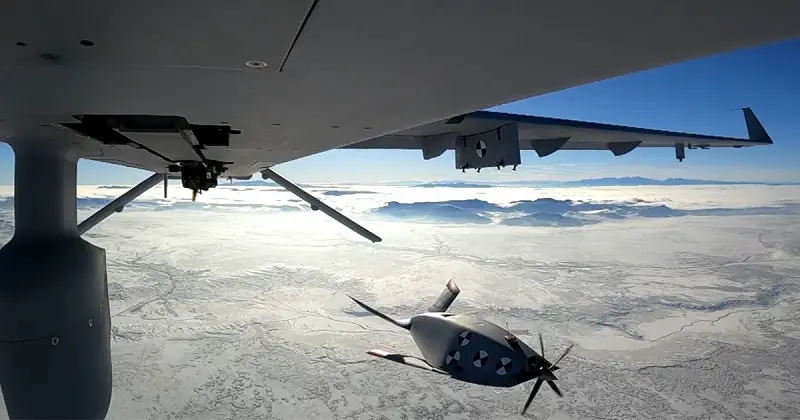Unmanned aerial system, or UAS, such as the Gray Eagle program have been an indispensable part of the U.S. Army’s mission capabilities for more than a decade. While a UAS can run operations without putting a Soldier at risk, there are still some moments where the risk is too high even for these machines. That’s where newer and smaller technology comes into play. General Atomics, the minds behind the Gray Eagle, has been collaborating with the U.S. Army Combat Capabilities Development Command to develop a new Enhanced Air and Ground Launch Effect Technology, or EAGLET, demonstrator which recently ran a series of captive carry and free-flight tests at Dugway Proving Ground.
“The Gray Eagle platform is going to stand-off more from the threat and have longer-range sensors on it, whereas the Air Launch Effect (ALE) EAGLET-type class would be able to fly in closer. Because of its lower cost you’re going to be willing to take more risk with an EAGLET ALE-type aircraft than you would with a group 5 like Gray Eagle,” explains General Atomics Test Engineer Tom Velky.
The team says DPG provides them with a unique location to test their new technology. “I feel like Dugway is a very reasonable place to come test; it has great support for these types of flight demonstrations, especially something like Eaglet. The airspace that’s available here is a tremendous asset, compared to some other ranges where it’s a much more congested area and therefore more difficult to work with,” says Ethan Brown, engineering director of advanced programs at General Atomics.

The EAGLET is intended to be a low-cost, survivable UAS that can be launched from the ground or from the air utilizing the Gray Eagle. This most-recent phase of testing was to explore stability and control of the new platform. Their goal is to show that it flies as their expected. It flies like an aircraft should and it can be maneuvered and brought in for a stable approach and landing as well. The results of these tests are feeding the next phase of the project — EAGLET 2.0 — which is a continued collaboration with DEVCOM and expected to be an improved, production-ready vehicle that incorporates lessons learned from the demonstrator. Flight testing for EAGLET 2.0 is expected to begin in 2025.
Eaglet fits into the ‘ALE Large’ category, which encompasses larger, more powerful sensors or payloads. Because of its design, Eaglet is capable of carrying a diverse range of payloads in support of multiple Army missions. Eaglet design extends battlefield options for commanders while reducing their decision cycles. Gray Eagle can carry Eaglet for thousands of kilometers before launching it while being controlled through unmanned-unmanned teaming or as a component of advanced teaming command and control concepts. Eaglet can work in concert with other long-range payloads carried by Gray Eagles, helicopters, or other platforms to support deep sensing in Multi-Domain Operations. With this successful flight of the Eaglet, GA-ASI will work with the U.S. Department of Defense (DoD) to feature it in other exercises to further determine its potential. The Eaglet is the newest entry into GA-ASI’s Evolution Series of advanced UAS concepts.

General Atomics Aeronautical Systems, Inc. (GA-ASI), an affiliate of General Atomics, is a leading designer and manufacturer of proven, reliable Remotely Piloted Aircraft (RPA) systems, radars, and electro-optic and related mission systems, including the Predator® RPA series and the Lynx® Multi-mode Radar. With more than seven million flight hours, GA-ASI provides long-endurance, mission-capable aircraft with integrated sensor and data link systems required to deliver persistent flight that enables situational awareness and rapid strike. The company also produces a variety of ground control stations and sensor control/image analysis software, offers pilot training and support services, and develops meta-material antennas.















